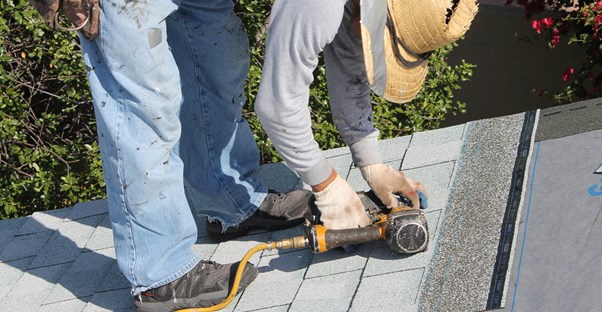If you are about to roof (or re-roof) your home, you might have considered taking matters into your own hands and doing the work yourself. Bravo!
No need to pay excessively for something you can do yourself. But some roofing jobs are easier than others, and, depending on the type of roof you have (or want to have), you might have your work cut out for you. Here are some things to keep in mind before you roll up your sleeves and get to work.
Choose a Material
To begin, you’ll need to decide exactly what kind of roof you want. This will depend on your budget, your needs, and the amount and frequency of maintenance you’ll need to do. Metal roofs are more costly and more difficult to install than traditional shingles, but, if you choose to install one, you’ll likely never need to work on your roof again. Since they are more difficult to install, homeowners commonly pay for professional installation. If you’re willing to do some research (there are a ton of online guides for DIY metal roofing) and do the work yourself, you can save a boatload of money on installation and labor fees.
If you’d rather pay less and accept the risk of having to repair or replace (at least some of) your work within the next decade or so, tile and shingle roofs are what you’re looking for. Both will have breakage— tiles can crack or shatter and shingles can split or become otherwise damaged—but both can be easily repaired/replaced. Using shingles is the most popular method of roofing, and for good reason. They are inexpensive, easy to work with, relatively durable, and provide great insulation and protection for your home. Since tiles are more rigid and breakable than shingles, they are a bit tougher to work with. Shingles can be cut with a utility knife, but tiles require a tool like an angle grinder.
Preparation Is Key
Before your ladder out, there are some things you should do to make sure your roofing project doesn’t encounter any setbacks. First, you’ll need to measure the area that you plan to cover. Regardless of the material you choose to use, you’re going to need to know the measurements. If you take good measurements and make careful calculations, you can avoid not buying enough or accidentally buying too much. That being said, buying some extra material isn’t a bad idea (that way, you have some for when/if you make repairs and you can be sure that it will match). After you’ve recorded your measurements, you should research your area’s building codes to make sure that your project is in compliance with them. Once that’s done, you’re ready to get roofing!




